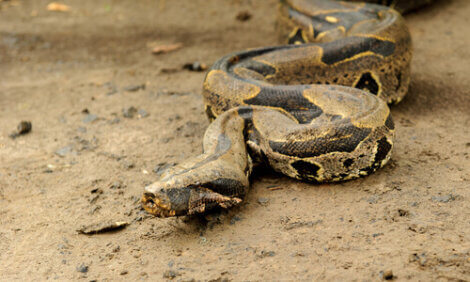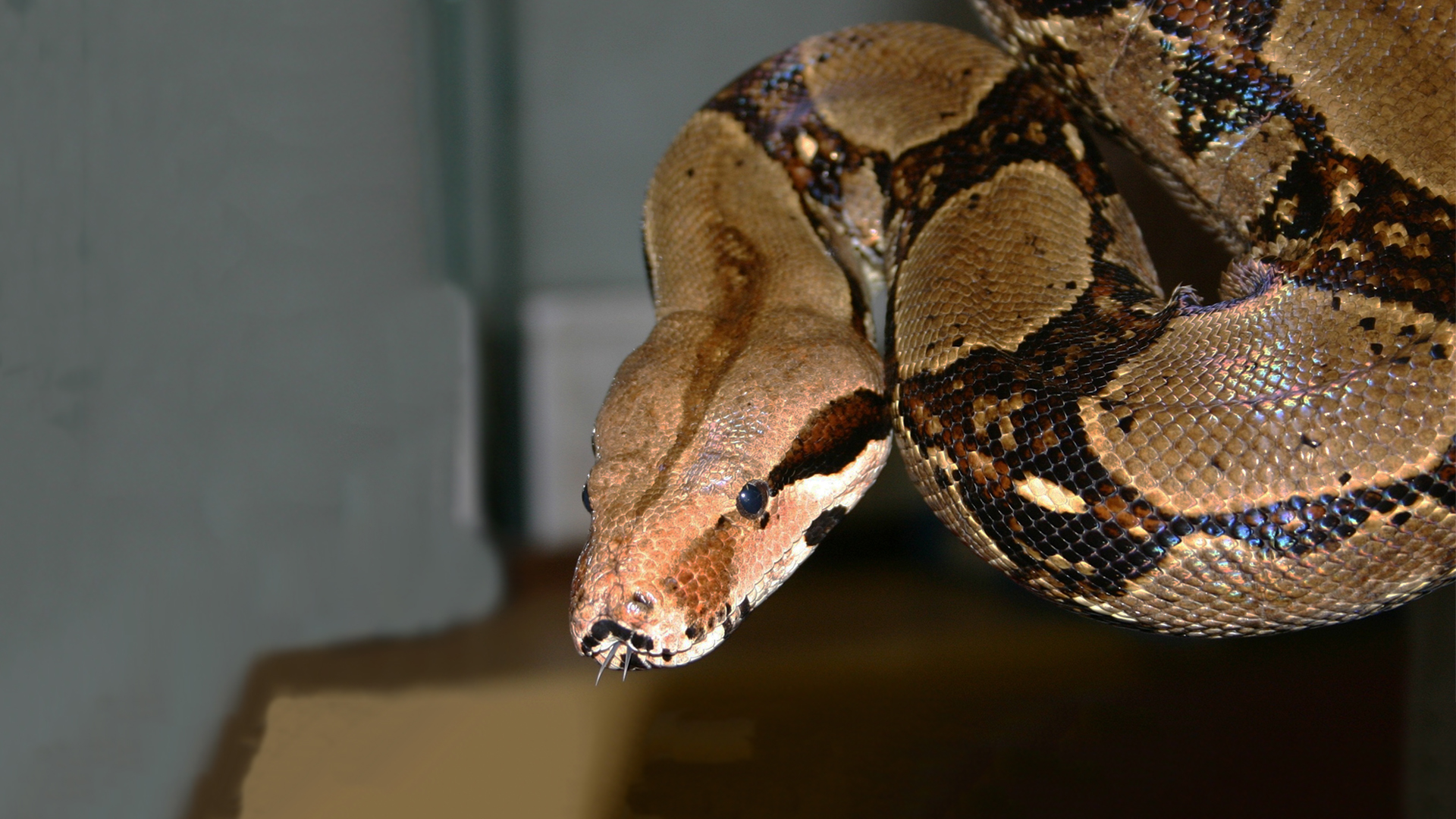
- #Boa constrictor habitat how to#
- #Boa constrictor habitat skin#
Their size primarily depends on their diet and amount of space they have to grow, though the female is often the larger of the sexes. The large red tail boa can be quite a sight to see, especially because it can grow to be up to 13 feel long.
#Boa constrictor habitat how to#
How to Identify Red Tail Boa: Appearance and Description While the exact population is unknown, they are classified as Not Extinct by the IUCN. They are not currently at risk of extinction because their numbers are steady, spreading them through Colombia, Suriname, Venezuela, and much of South America.
#Boa constrictor habitat skin#
The biggest threat to the red tail boa is the over-collection of the species by humans, whether it be for the pet trade or for its skin in the fashion industry. Boa literally means “large snake.” Red Tail Boa Population & Conservation Status The scientific name is Boa constrictor, which is Latin in origin. The red tail boa, which is often referred to as the Suriname red tail boa, the common boa, or the boa constrictor, is a group of subspecies under the Boidae family of the Reptilia class. See all of our entertaining and insightful animal articles.
The Largest Snake You Can Keep as a Pet. Discover the 10 Most Popular Snakes in the World. 7 Snakes that are Invasive in the United States (Including a “Hybrid”). SPOOKY! Discover the 10 Scariest Snakes in the World!. Discover the Largest Boa Constrictor Ever Caught. Would You Hug a Snake? Meet the 10 Friendliest Snakes in the World.  Meet the Snake With Legs & How It Was Different From a Lizard. sabogae) – The species primarily lives off the coast of Panama in the Pearl Islands.Įven though there are other species that have been filed under the red tail boa subspecies, herpetologists and taxonomists have since separated them into their own species. ortonii) – This subspecies was named for James Orton, an American naturalist. melanogaster) – This boa is specific to Ecuador. longicauda) – This species lives in northern Peru. constrictor) – This is the main name associated with the boa constrictor, and it primarily lives in South America. It was named for a Brazilian herpetologist named Afrânio Pompílio Gastos do Amaral. amarali) – This species lives in Brazil, Bolivia, and Paraguay. The primary difference between the subspecies appears to be the location, though some of them have biological differences too. However, scientists have not separated them significantly in their descriptions. The boa constrictor consists of seven main subspecies. Due to the commercial demand for this boa as a pet, they can be found with private breeders or even major pet stores in both North and South America. If you’re looking to adopt one, that’s a different story. Due to importation, they are an invasive species in Aruba, Mexico, Puerto Rico, Southeast Asia, and the United States.Ģ7,861 People Couldn't Ace This Quiz Think You Can? Take Our Brand New A-Z-Animals Snakes Quiz No matter where you look, they follow the food. They are sometimes referred to as the Colombian red tail boas or Suriname red tail boas for their abundance in Colombia and Suriname. Woodlands, grasslands, tropical forests, and semi-deserts are all prime spots for these snakes to live. The preferred habitat of the boa constrictor has high levels of humidity and warmth, which is why they are often found in South and Central America. The typical price of a baby is $200, but more unique colors cost about $1,000 or more. The common boa primarily lives in Central America, though it is native to Colombia, Suriname, and other countries nearby. As big as this boa may be when full-grown, they are easy to care for and are great pets for beginners. However, the expected lifespan is 20-30 years when in captivity. The oldest boa constrictor on record lived to be 40 years, 3 months, and 14 days old. Due to the slow speed of the metabolism, one meal can fill up this snake for months before he becomes hungry again.
Meet the Snake With Legs & How It Was Different From a Lizard. sabogae) – The species primarily lives off the coast of Panama in the Pearl Islands.Įven though there are other species that have been filed under the red tail boa subspecies, herpetologists and taxonomists have since separated them into their own species. ortonii) – This subspecies was named for James Orton, an American naturalist. melanogaster) – This boa is specific to Ecuador. longicauda) – This species lives in northern Peru. constrictor) – This is the main name associated with the boa constrictor, and it primarily lives in South America. It was named for a Brazilian herpetologist named Afrânio Pompílio Gastos do Amaral. amarali) – This species lives in Brazil, Bolivia, and Paraguay. The primary difference between the subspecies appears to be the location, though some of them have biological differences too. However, scientists have not separated them significantly in their descriptions. The boa constrictor consists of seven main subspecies. Due to the commercial demand for this boa as a pet, they can be found with private breeders or even major pet stores in both North and South America. If you’re looking to adopt one, that’s a different story. Due to importation, they are an invasive species in Aruba, Mexico, Puerto Rico, Southeast Asia, and the United States.Ģ7,861 People Couldn't Ace This Quiz Think You Can? Take Our Brand New A-Z-Animals Snakes Quiz No matter where you look, they follow the food. They are sometimes referred to as the Colombian red tail boas or Suriname red tail boas for their abundance in Colombia and Suriname. Woodlands, grasslands, tropical forests, and semi-deserts are all prime spots for these snakes to live. The preferred habitat of the boa constrictor has high levels of humidity and warmth, which is why they are often found in South and Central America. The typical price of a baby is $200, but more unique colors cost about $1,000 or more. The common boa primarily lives in Central America, though it is native to Colombia, Suriname, and other countries nearby. As big as this boa may be when full-grown, they are easy to care for and are great pets for beginners. However, the expected lifespan is 20-30 years when in captivity. The oldest boa constrictor on record lived to be 40 years, 3 months, and 14 days old. Due to the slow speed of the metabolism, one meal can fill up this snake for months before he becomes hungry again. 
They don’t require much upkeep beyond a large enclosure and the right humidity, but they are also captured as a way to make snakeskin products. They are wonderful pets, though their reproductive habits and natural habitat range greatly. The common boa can grow to be 13 feet long or greater when they reach their full-grown size. The red tail boa is sometimes called the Suriname red tail boa, boa constrictor, or common boa.






 0 kommentar(er)
0 kommentar(er)
